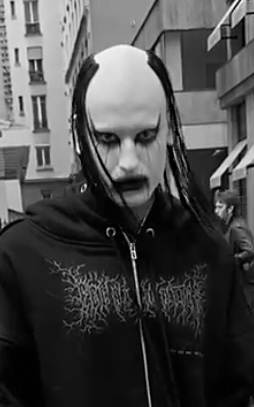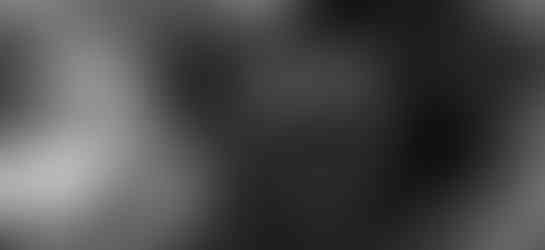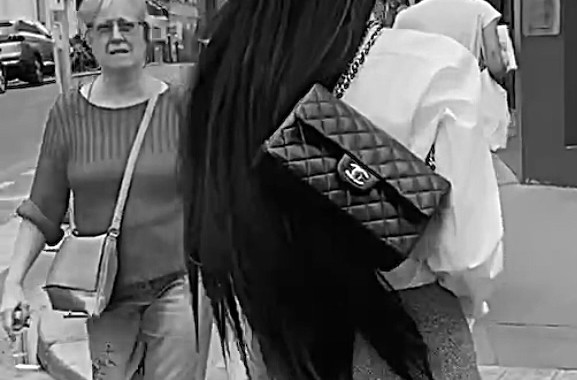- Dec 7, 2023
- 5 min read
An Interview with Émile Racine by Alexia Georgieva
Inspired by the rave scene, Racine is a Montreal-based brand known for its unique modular shoes created with 3D printers. Throughout the past few years, the psychedelic brand started catching the attention of multiple artists in the City of Angels. As seen in the wardrobes of Lil Nas X and Dorian Electra, Racine is slowly but surely making a name for itself.

The story of Racine takes its roots in Barcelona, Spain, where Émile Racine, the brain behind the brand, was an exchange student in industrial design at Elisava University. Accustomed to Montreal’s heavily technical and strict teaching methods, Émile had the chance to explore industrial design through a visual and creative lens during his studies in Europe. “I could do anything I wanted, so I just decided to do a shoe project.” Eventually, he returned to Montreal to complete his undergraduate degree at the University of Montreal. Émile’s graduation project was a reversible shoe that could be deconstructed and recomposed to make eight different shoes. Overall, the project incorporated the technical and conceptual aspects he had developed throughout his studies to his artistic outlook on industrial design.
Upon graduating, he was unsure which direction to take, so he purchased some 3D printers and started experimenting with different designs. He then spent a year working from his basement and collaborating with various people involved in fashion who needed shoes for their projects. At that point he started feeling ready to push his work further and develop something unique. That is how he met Milan Tanedjikov, the creator of the LIGNES DE FUITE talent incubator aiming to support emerging rising students and help them refine their work while providing them with industry connections. Under Milan’s mentorship, Émile started working on his first collection, learnt how to develop silhouettes, balance his looks, broaden his shoe universe, and create a high fashion product that could be placed on the market. Despite the delays that the COVID-19 pandemic brought to the early stages of his work’s development, Émile overcame them and continued working on his collection. One and a half years later, the final five looks were ready and appeared in a shoot with Paper magazine.

What were your main inspirations for the first collection that you created?
When I began my project with Milan, the starting point of my work was the rave universe, and then I was also inspired by the materials and textures of hiking and climbing technical wear, so those two were my main guidelines. Once the mentorship program finished, I continued working on my collection on my own. So I started adding new components to my work: references to personal experiences and interests I started exploring as I was designing the rest of the collection. One of those is the spiritual component of my work, which is rooted in the research of sacred geometries. I also grew an interest in motorcycles and motorcycle races. I just really liked their technical wear, so I began manipulating materials such as leather.
I know that you have worked with a few artists so I was wondering, what is your process when you start designing something, do you always have in mind who would be your potential client, or you kind of go ahead and develop whatever you have in mind?
In general, it is a bit of both. If an artist asks me to create something, I will take ideas floating around my mind and then try to adapt them to the artist and their style. But most of the time, I push to maximum the ideas I have, and I allow myself to do whatever Iwant.

You have an interesting background that is not fashion-specific but is still very relevant to your work. Would you say you incorporate much of your industrial design knowledge into the garments and shoes you create for Racine?
Yes, a lot, actually, because we usually make clothes and accessories with rigid components, 3D prints, etc. The garments and shoes are designed as sports equipment and functional objects rather than usual garments. The challenge here is that it's not as simple as designing a shirt or a skirt because what I create has often never been done, so I don't have any guidelines to follow. When you make a jacket with emphasised studs, as we have in the collection, it is something that has never been done, so I have to develop the technique to accomplish it. I have to find answers to many questions; how will we add the 3D printed studs to the clothes? Will the sewing machine go through the 3D printed parts? I really have to think of new processes to create these accessories or clothes that do not really exist so my industrial design background really comes into play.
How do you efficiently drive the production of the collections and pieces for Racine? Do you have a permanent team of people who are working with you?
I have my assistant, but generally, the team varies in number because people often work by contract with me. If I need someone for the tailoring I will call someone who can do that; I will try to find trained people for the specific task that I need. At the moment we also have interns so on average we are 3-4 people and for now that model works for me. You were in Los Angeles a few months ago and you mentioned that you are going back in a few days. What makes this city an epicenter for Racine? Most of our customers are in Los Angeles, so we like to go there to strengthen our relationships with our established clients and network and meet some other interesting people. Eventually, we would like to go there in a few months and present some new garments and shoes. We also enjoy holding popups in raves because people are quite receptive, much more than in Montreal, in my experience.
As an emerging brand, what would you say has been the most challenging aspect of your work so far?
For me the challenges were not really related to creativity or to the development of the garments, shoes, and accessories. What I found difficult is the fact that you need some understanding of the business world and how to navigate it to create a product that can be profitable. It’s also things like legal issues, as a creative, you are not really aware of all the laws and standards that you have to follow when you have a brand so navigating and understanding all of that has been a challenge.
Do you have any advice for emerging designers who are in the process of developing their brand?
I think it is essential to surround yourself with the right people, and I also believe that making a few mistakes can be good and formative. It is also important to be able to say no; although it is hard, always assess if propositions you have are actually beneficial for you because, in the end, you have to think about your brand. Fashion is also a difficult field to break into, so I would say that having a more niche product that makes you unique might be a strength.
Credits:
Text Alexia Georgieva Images Raphael Viens & Boris Halas Models DORIAN ELECTRA & PRINCESS GOLLUM
We kindly invite you to purchase our products and register to our events and book our short courses . By doing so, you contribute to our thriving community and enable us to create even more amazing learning experiences and opportunities for fashion creatives. Your continued support is deeply appreciated, and we thank you for being a part of our journey.


























































